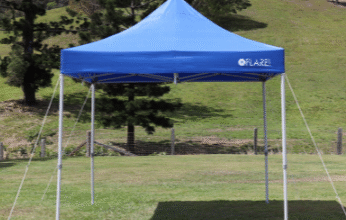How Much Do Boba Shop Owners Make? Boba Shop Profit Margins

Curious about how much do boba shop owners make? The bubble tea industry is booming, but what does it take to turn a love for boba into a successful business? In this post, we’ll break down the financial side of owning a boba shop—from profit margins and factors that affect potential earnings. Whether you’re dreaming of starting your own shop or just curious about the business behind your favorite drink, let’s uncover some surprising insights!
The Rise of Boba Shop Businesses
Boba tea has become a global favorite, starting as a small trend in Taiwan and growing into a worldwide sensation. People everywhere enjoy these flavorful teas with chewy tapioca pearls.
Social media has played a big role in this trend. Eye-catching drinks and fun flavors make boba shops popular places to share photos and experiences online. Young customers are always looking for new and exciting drinks to try.
Boba’s wide variety also makes it appealing to many people.
Whether you prefer creamy milk tea or a fruity slush, there’s a drink for everyone. Many shops now offer healthier options like fruit-based teas and dairy-free choices.
With its rising popularity, more entrepreneurs are opening boba shops, bringing unique flavors and creative twists to their local communities.
Determining Profitability in a Boba Tea Shop
1. Break-Even Point Analysis
- Determines the minimum sales needed to cover costs.
- Fixed Costs: Rent, insurance, utilities.
- Variable Costs: Ingredients, packaging, wages.
- Formula: Break-Even Point = Fixed Costs / (Price per Unit – Variable Cost per Unit).
- Example: If rent is $3,000, a boba tea sells for $4, and variable costs are $1.50, you need to sell 1,000 cups/month to break even.
2. Profit Margins
- Measures profitability after accounting for all costs.
- Formula: Profit Margin = (Revenue – Total Costs) / Revenue × 100%.
3. Industry Profit Margins (10% – 30%)
- Low Ingredient Costs: Tea, tapioca, and syrups are inexpensive.
- Premium Pricing: Allows for higher margins.
- Factors Influencing Margins:
- Location: High-traffic areas increase sales.
- Pricing Strategy: Higher prices improve margins but may limit customers.
- COGS Management: Efficient cost control boosts profitability.
- Operational Efficiency: Streamlined processes reduce expenses.
Understanding these key concepts helps optimize profitability in a boba tea business.
Factors That Affect Profit Margins in Boba Shops
Several key factors affect the profitability of a boba shop:
- Ingredient Costs – Basic ingredients like tea, tapioca, and syrups are usually affordable, but premium or specialty ingredients can raise costs. Managing these expenses is essential to maintain good profit margins.
- Labor Expenses – Skilled employees improve customer experience, but wages and training programs add to overhead costs. Efficient staffing helps balance service quality and expenses.
- Location and Rent – A busy location boosts sales but often comes with high rent, cutting into profits.
- Seasonality – Sales often increase during warmer months when people crave cold drinks, but winter can slow down business, affecting earnings.
- Marketing Strategies – Promotions and social media marketing attract customers but require upfront investment and consistent effort.
- Operational Efficiency – Fast service and reducing waste lower costs and improve customer satisfaction, helping boost profits.
By managing these factors wisely, boba shop owners can increase their earnings and build a successful business.
Tips for Increasing Profit Margins in Your Boba Shop
Boosting profit margins requires a mix of smart cost management and revenue-enhancing strategies. Here are key ways to maximize profitability:
- Optimize Ingredient Costs – Cut costs by securing bulk discounts, finding alternative vendors, and managing inventory efficiently.
- Diversify Your Menu – Introduce seasonal flavors and limited-time specials to attract new customers and encourage repeat visits.
- Streamline Staffing – Schedule employees efficiently during peak hours while avoiding overstaffing during slow periods. Well-trained staff can enhance customer satisfaction and speed up service.
- Leverage Social Media and marketing—Promote new drinks, limited offers, and in-store events on Instagram, TikTok, and local influencers to increase foot traffic.
- Implement Loyalty Programs – Reward repeat customers with discounts, freebies, or points-based rewards, encouraging higher spending per visit.
- Upsell & Bundle Offers – Encourage customers to add extra toppings, pair drinks with snacks, or upgrade to larger sizes to increase the average ticket size.
Boba shop owners can increase profits by running operations smoothly, keeping customers engaged, and setting smart prices—while maintaining great quality and service.
Challenges Faced by Boba Shop Owners
Boba shop owners encounter several challenges impacting their operations and profitability:
- Market Saturation and Competition: The rapid expansion of the bubble tea industry has led to market saturation, making it difficult for individual shops to distinguish themselves. Continuous innovation and unique offerings are essential to attract and retain customers.
- Labor Costs and Training: Hiring and retaining skilled staff proficient in boba preparation and customer service is challenging. High turnover rates necessitate continuous training, increasing operational costs.
- Seasonal Sales Fluctuations: Demand for bubble tea varies seasonally, with higher sales in warmer months and potential declines during colder seasons. Strategic planning is required to manage inventory, staffing, and marketing effectively.
- Marketing and Social Media Engagement: Maintaining an active presence on social media is crucial for attracting and retaining customers.
- Health and Nutritional Concerns: Bubble tea often contains high sugar and fat content, leading to health concerns among consumers. Offering healthier options is increasingly necessary to meet changing consumer preferences.
Addressing these challenges requires strategic planning, adaptability, and a deep understanding of market dynamics to ensure long-term success in the competitive bubble tea industry.
Read also: Comfort Food Classics: Russet Potato Recipes For Every Occasion
Conclusion
Boba shop owners can make good money, but their earnings depend on things like location, pricing, efficiency, and competition. A successful shop can make between $200,000 and $1 million in yearly sales, with profits typically ranging from 10% to 30%.
If a shop is in a great location, has strong marketing, and keeps customers coming back, owners can earn around $5,000 to $25,000 per month in profit. However, high rent, labor costs, and lots of competition can make it harder to succeed.
To make more money, owners should manage costs wisely, offer creative drinks, use smart marketing, and provide great customer service. Running a boba shop can be profitable, but it takes careful planning and effort to stand out.





